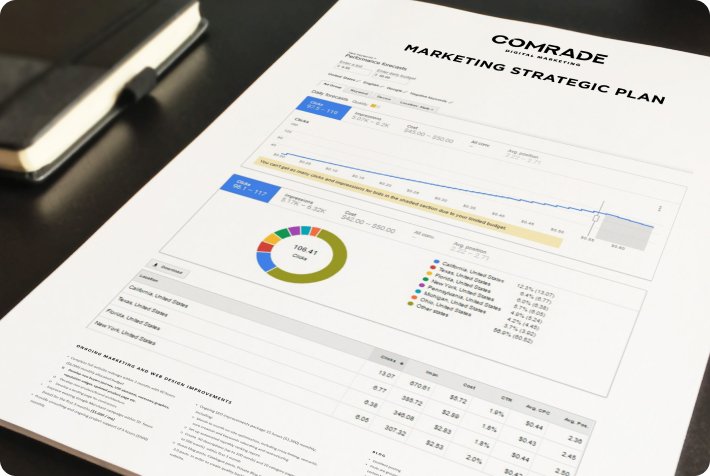SEO copywriting is the art and science of creating web pages that are both search engine-friendly and user-friendly. It is a specialized form of writing that helps websites rank higher in search engine results pages (SERPs) and drive more organic traffic.
While the basic principles of SEO copywriting are relatively simple, the execution can be difficult. That’s because it requires a deep understanding of how web crawlers work and what users are looking for.
This guide will teach you everything you need to know about the SEO copywriting process, from SEO basics to the most advanced techniques. By the end, you will have the tools and knowledge to create content that people find valuable and helps you achieve high search engine rankings.
What Is SEO Copywriting?
SEO copywriting is the process of writing content that is both keyword-rich and optimized for search engines. It is a specialized form of copywriting that is designed to help improve a website’s visibility and organic ranking. SEO copywriting can be used for a variety of content types, including website copy, blog posts, articles, and even social media posts.
Great copywriting comes down to three things:
- It should show, not tell (where possible)
- It should be simple to understand
- It should tell readers what they need to know and quickly.
The same principles apply to content SEO copywriting, except you’re pairing SEO best practices to product pages, Google Ads, meta tags, title tags, website content, social media platforms, and so on.
Is It Possible to Write a Good Article With SEO in Mind?
SEO experts used to be concerned with writing content that included as many relevant keywords as possible, which led to the frowned-upon practice of keyword stuffing. This refers to overloading a web page with target keywords to manipulate a site’s ranking. However, search engine algorithms are more advanced and no longer reward higher positions based on keyword ranking alone.
So, yes, it is entirely possible to write informational content that’s concise and actionable while still reaching search engine optimization requirements. Let’s use the example of a gym and pretend the target keyword is get fit.
Poor copy would read something like this:
Do you need to get fit? Get fit at Curve’s gym. We have new membership discounts to help you get fit.
Alternatively, crisp copy might read like this:
Looking for the best place to train? Receive a free month’s membership when you sign up at Curves gym. We’re here to help you get fit.
If you want to build credibility and audience rapport, you can’t just focus on keyword intent.
Writing conversationally and offering valuable content that addresses customer pain points is the only way to improve organic ranking.
Optimization for Search Engine, Users, or Both?
We get this question a lot from clients and explain it like this: Online businesses primarily use the internet because everyone else does. The truth is out: 56% of consumers don’t trust a business without a website. Having an SEO-friendly website is a stock standard prerequisite or bare minimum, every organization must meet to thrive in the current marketplace.
Now, marketing online is competitive. So, to stand out, you have to use SEO copywriting tools and strategies to climb the rungs on Google search engine’s results (SERPs) ladder. Regardless of how great your copy is, it won’t get noticed by web crawlers without SEO, yet, at the same time, no one is interested in reading robotic keyword-optimized content.
It’s a pragmatic balance. When you understand your target audience, you find relevant keywords that relate to their online searches and craft spectacular copy (intelligently sprinkled with these specific keywords) that’s interesting and nudges them further along the marketing funnel.
That’s the basics. Of course, there are tricks of the trade that ensure on-page SEO copywriting delivers high ROI.
Why Is Copywriting Important for Growth in Search Engines?
Content that is optimized for users and search engines is essential for any successful website. That’s where SEO copywriting comes in. SEO copywriting is the process of creating web content using keyword research and SEO strategies. This ensures that your content is discoverable and useful for users, which will, in turn, help your website rank higher in search engine results pages.
Depending on the client’s needs, copywriters may create a wide range of materials, including:
- Web pages
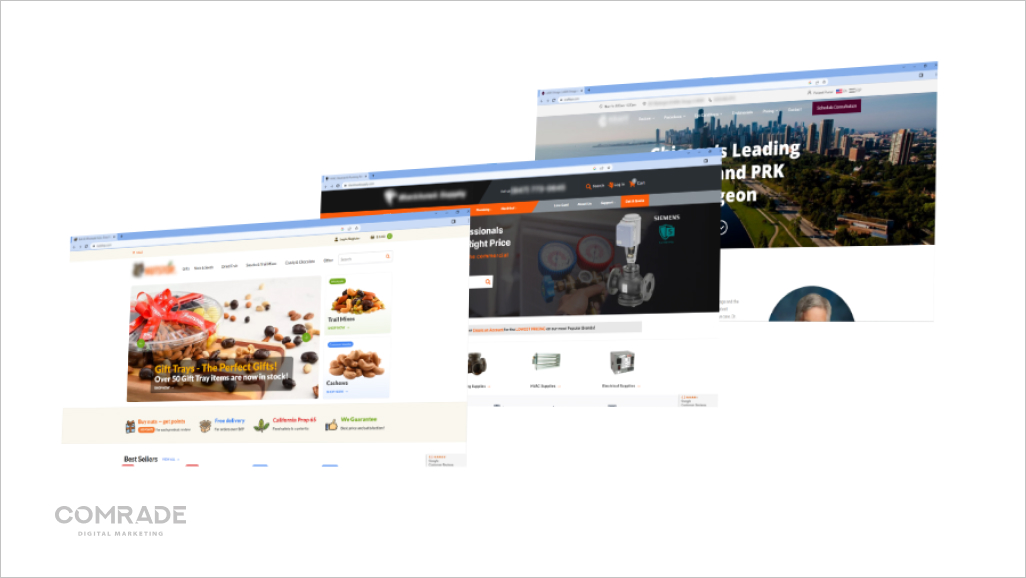
- Blog posts

- Ad copy

- Website content
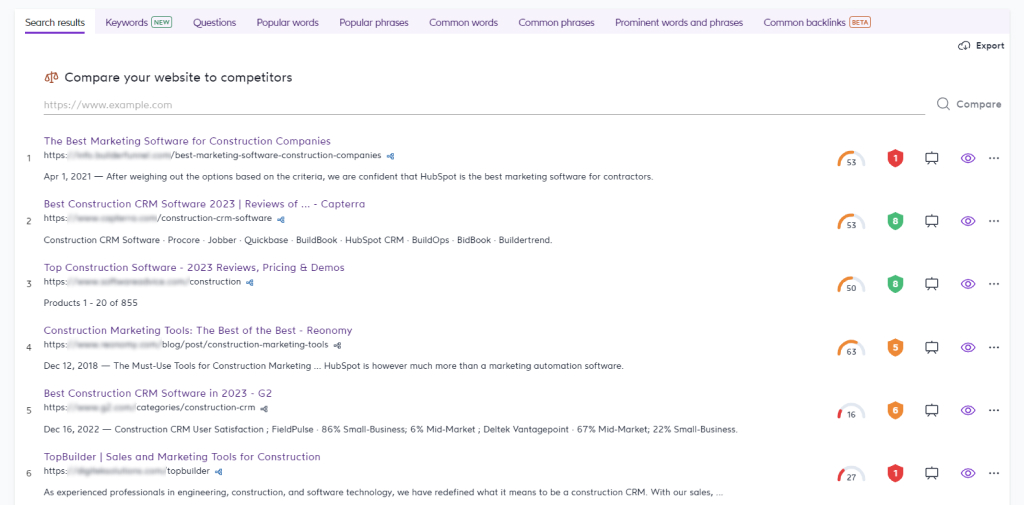
- Ebooks
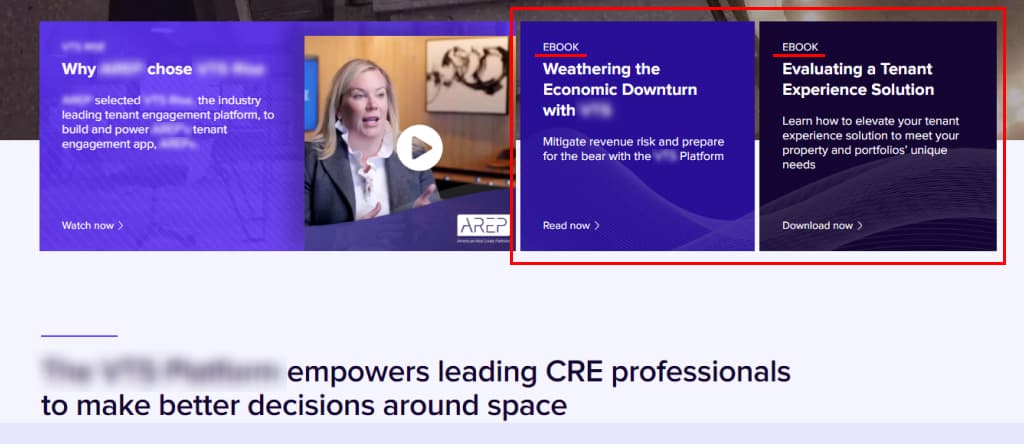
Investing in SEO copywriting for your company is a good idea for the following three reasons:
- You’ll be able to attract qualified traffic by targeting specific keyword phrases.
- You can create trust and establish authority by providing answers to your audience’s questions.
- You’ll be able to convince readers to take action, whether it’s downloading your app, subscribing to your podcast, or making a purchase.
Now that we’ve figured out why copywriting is vital – let’s move on to the best SEO copywriting tips.
Top 9 SEO Copywriting Tips
SEO copywriting is about much more than using a keyword naturally a handful of times on landing pages or your next blog post. It’s a vital part of driving conversions. Implementing the tips below can help optimize your SEO content writing.
1. Keyword Research
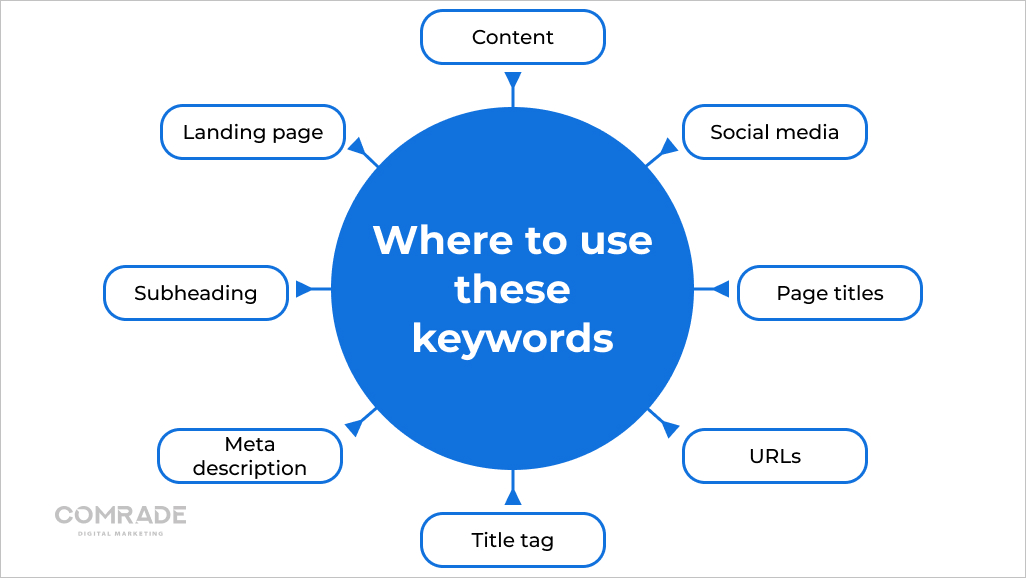
Marketing platform Conductor defines keyword research as:
“Keyword research is the process by which you research popular search terms people type into search engines like Google, and include them strategically in your content so that it appears higher on a search engine results page (SERP).”
No online content or marketing campaign should exist without keyword research. It’s important because it reveals exactly what terms people are searching for online, what their intent is (keyword intent), and how competitive keywords are. This data is used to develop marketing plans to increase organic search visibility rankings and bring in more traffic.
As a starting point, marketers will brainstorm seed keywords. If we continue with the gym example, we might come up with the following:
- Gym
- Gym workout
- Gym near me
- 24-hour gym
Now, because it is impossible for a single person to index the entire web, marketers plugin seed keywords into keyword research tools like Google Keyword Planner, Ahrefs, and Moz. These pull additional keyword ideas from their databases based on the seed words.
You’ll come across both short and long-tail keywords during research. The former is specific, consisting of one or two words, for example, gym workout, whereas the latter may consist of three to five words or more, for example, best time to do gym workout.
Typically, a long tail keyword is more specific and is used when potential customers are closer to buying. Most have lower search volume compared to primary keywords, which is advantageous. They’re not as popular and less competitive, so it’s easier to rank for them.
Next, you’ll want to consider an ideal keyword density that is around 1-2% for blog posts and web page copy. This just means the target keyword should appear one or two times per 100 words. At this rate, the keyword is present enough times to show web crawlers exactly what the page is about without engaging in keyword stuffing.
Wondering where to use these keywords? The page titles, body copy, title tag, meta description, subheading, content, images, URLs, link anchor text, and social media are the perfect places!
2. Frequently Asked Questions
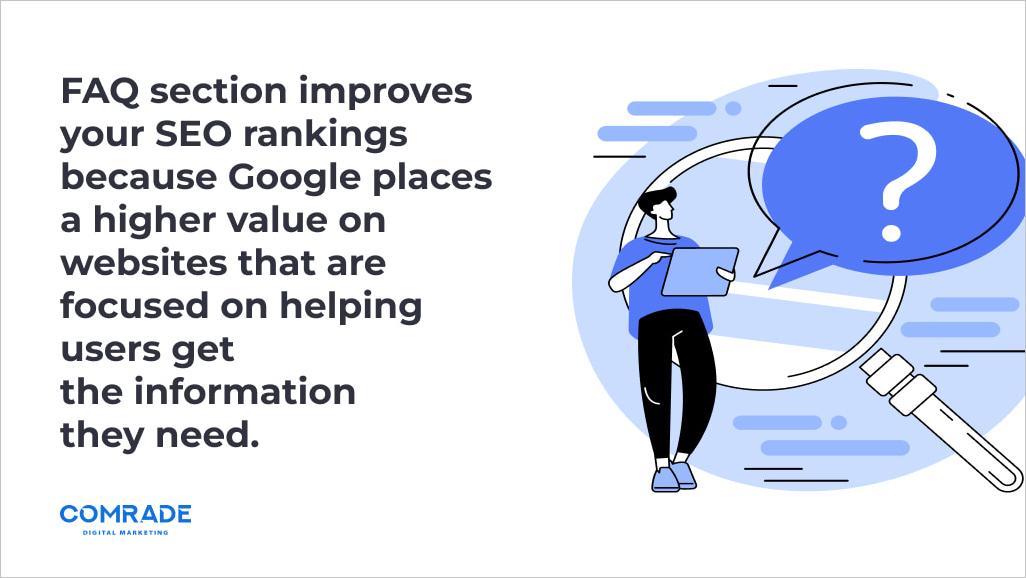
FAQ pages are important website components, either as standalone sections or as part of navigation bars and footers. Having a strategic FAQ section allows you to respond to your customers’ search intent using particular keyword/s.
This improves your search engine rankings because Google places a higher value on websites that are focused on helping users get the information they need. For example, if you discover users’ search, how much are gym memberships? Then you can include this as part of your FAQs. Theoretically, this should drive highly targeted traffic to your website.
You can create SEO-friendly FAQ pages by doing the following:
- Allowing keyword research to inform your FAQ copy
- Structuring content in a manner that makes it easy for web crawlers to crawl. For example, grouping questions around topics.
- Using subheadings, bulleted lists, and short paragraphs to improve readability
FAQ pages are part of the customer journey. Each answer is a step down the buyers’ funnel, which is why adding internal and external links to nudge them along is crucial. Internal links in FAQs must consider keywords and user intent.
For instance. Let’s say the primary keyword is gym membership. The question might be: How much are gym memberships? And the answer: Gym memberships are $30 a month. To lead prospects further down the funnel, marketers will internally link gym memberships in the answer to a sign-up landing page to complete.
3. Optimize Your Headlines

80% of readers don’t make it past the headline. Advertising pioneer David Ogilvy said: “On average, five times more people read the title of an article than read the actual text.” Legend has it; he once rewrote a headline over 100 times. There are no two ways about it; headline writing is a craft that takes time to perfect.
Creating high-quality content is about providing value, so prospects convert. These SEO copywriting tips can make headline writing easier:
- Keep it short: Google only displays 50 to 60 characters. Keeping a headline to this length avoids awkward cut-offs on search results.
- Be straightforward: You should provide readers with a clear and concise idea about what the blog or article is about. Most recommend benchmarking language at an 8th grader level. Remember, there is a difference between advertising copy and marketing with helpful content. While you still want to appeal to emotions, the focus with blogs, for example, should be creating something simple and attention-grabbing.
- Use Keywords: Where possible, lead your headline with a primary keyword. Always place keywords in your headline, so long as it appeals to your readership.
- Insert strong adjectives: Compelling adjectives bring more customer engagement. Positive and powerful ones tend to work best.
- Try formulas: These can work, depending on the nature of your own content. For example, The Secret too…How to [specific task] that [rewarding benefit]…What You Need to Know About, etc.
4. Identify Users’ Search Intent
Search intent is the reason someone is performing a search, and can be broken down into four main categories: informational, navigational, commercial, and transactional. Mapping search intent can help you better understand what someone is looking for when they enter a query, which can, in turn, help you create more relevant and targeted content. Let’s take a closer look at the main categories of search intent using examples:
- Informational searches are made when a user is looking for information on a topic, such as “how to tie a tie”
- Navigational searches are made when a user is looking for a specific website, such as “Facebook”
- Transactional searches are made when a user is looking to make a purchase, such as “buy shoes”
- Commercial investigation searches are made when a user is considering a purchase but is looking for more information, such as “comparison of washing machines”
There are a few different ways to map search intent. One is to simply look at the request itself and try to determine what type of information the user is looking for. Another is to use Google Analytics to track clicks and see what kinds of queries are resulting in conversions or other desired actions.
No matter which method you use, mapping search intent can be a helpful way to improve your content strategy.
5. Your Site Should Be Fast
Even though it appears seemingly unconnected, technical SEO is just as important as SEO related to content. From an SEO perspective, it’s the process of ensuring a website meets the technical requirements for crawling and indexing (jargon used to describe web crawlers “reading” and ranking a website).
Website speed is one such critical aspect that not only impacts user experience but also ranking. Google has officially admitted that fast load speed is a positive ranking factor. In fact, two seconds is an acceptable load time threshold for eCommerce stores. Of course, that doesn’t mean you should compromise on quality just to load faster.
So, why is it so important, then? A one-second delay can reduce customer satisfaction by 16%. When you do the math, you can see how 3 seconds leads to almost 50% less satisfaction. Website speed impacts revenue and performance. To send positive engagement signals to web crawlers, you can do the following:
- Choose a high-performance web host. Cheaper options don’t necessarily provide the results you need.
- Compress and optimize images
- Ensure your website is mobile-friendly
- Minify CSS, JavaScript, and HTML
- Eliminate unnecessary plugins
- Reduce the number of pop-ups, especially on mobile
6. Be Informative

Informative graphs, infographics, and visual content help readers understand information better. The human brain processes visual information is 60,000 times faster than text-based content. For example, instead of writing a blog post, you might be able to present the same information as a video or infographic, which conveys it more effectively.
A strategic visual approach will grab a user’s attention at every stage of the customer journey. Adapting popular written or audio content into visuals is also a smart way to draw fresh attention to evergreen content while making brand insights digestible and shareable.
The New York Times and The New Yorker’s Instagram stories repurpose in-depth textual content into visual stories that are easily consumed on Instagram. Both these publications use clickable action to build a bridge of engagement across digital channels, where an audience can explore a story in snippets and in-depth.
Perhaps what’s important to take away is how platforms inform content type. Social media marketing presents limitless opportunities to educate users about your products and services in an easy-to-understand format. In short, visual content engagement marketing increases attention and retention.
7. Featured Snippets
A featured snippet is a highlighted excerpt of text that appears at the top of a Google search results page in ‘Position 0’. It provides quick answers to search queries and is pulled from pages indexed by Google. The most common types of featured snippets are lists, steps, tables, and definitions.
According to marketing software SEMrush, featured snippets place websites at the top of SERPs, making them much more clickable. Their visibility on Google is an indicator of brand authority, which bodes well in terms of search algorithms and users.
In particular, featured snippets take up 50% more of the screen on mobile screens, significantly increasing click-through rates that may even supersede higher organic links listed below. When writing copy for your website, think about how you can format your information in a way that’s most useful to users.
Interestingly, SEMrush found featured snippets appeared more often for long-tail keywords that indicate a specific intent at particular points in the sales funnel. A gym, for example, might optimize web content for the search term. When is the best time to work out? With a proper SEO writing strategy, it might well appear as a featured snipped, and improve click-through-rates.
8. Show Don’t Tell
Online content with enticing images receives 94% more views than those without. If you’ve spent time crafting the perfect blog post, you’ll want to get as many eyes on it as possible. Using images adds meaning to the text, either by conveying emotion, evoking atmosphere, or further highlighting the topic.
Always consider what you want to accomplish with an image. What effect do you want it to have? Images use tends to fall into four common categories:
- Entertain: These provoke smiles and spread goodwill. For example, memes.
- Educate: These images share information and build authority. For example, infographics/graphs.
- Provoke: These images surprise and prompt action or serious thought. For example, political cartoons.
- Inspire: These images evoke emotions, encourage or uplift viewers. For example, images with quotes.
Choosing one effect helps hone on in the type of message or tone you wish to convey, although it is possible for these image categories to overlap from time to time.
Then, when it comes to social media, you should think visually when ideating content for these platforms. This is a necessary consideration for content as a whole. Do you need to write a blog post, or can you convey the same information via video, image, or infographic? As it is, video search results have 41% higher click-through rate than plain text.
Of course, the type of content you create, and target keywords inserted, will depend on which channels your target audiences use and respond to, as well as what business you have.
For instance, in the marketing world of eCommerce, product-related businesses should always have an image for every product you offer that’s high-quality and consistent with other product images.
9. Calls to Action
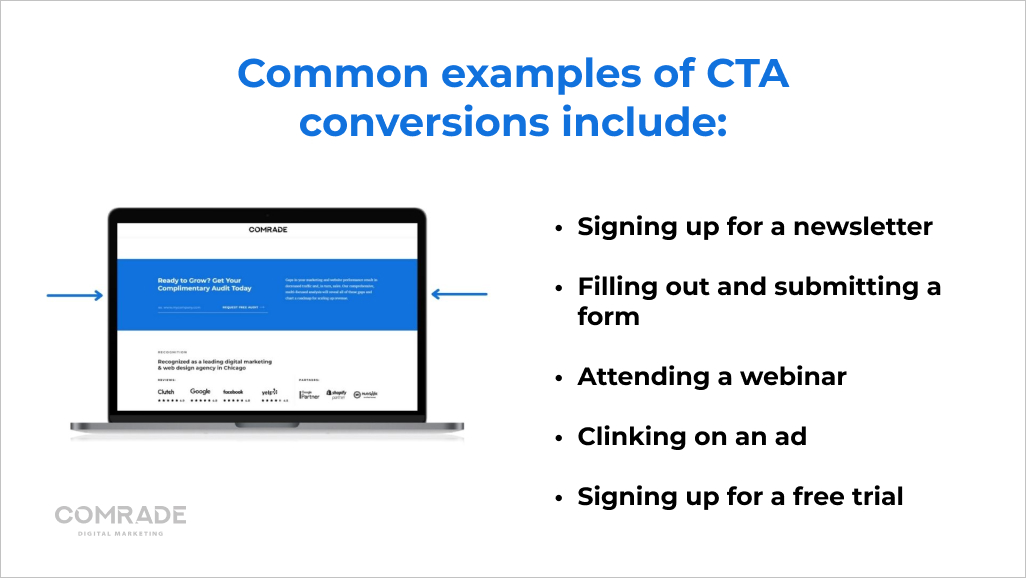
Calls to action (CTA) are tactics used as part of conversion marketing to increase successful conversions. SEO copywriting that prompts an immediate response or encourages a sale is a CTA. Common examples of CTA conversions include:
- Signing up for a newsletter
- Filling out and submitting a form
- Attending a webinar
- Clicking on an ad
- Signing up for a free trial
Each conversion is designed to nudge prospects further down the sales funnel until a purchase is made—the ultimate conversion! Without a CTA, a visitor may not know the next steps to purchase a product or sign up for a newsletter; hence, they are important signposts to motivate action.
When executed well, CTAs emphasize the power of SEO copywriting. Without them, copy falls flat. Adding a strong call to action, especially in paid ads, convey the intent of your campaign to your audience.
A CTA can be subtle or blunt, creating a sense of urgency or gently steering audiences to take the next step. For example, Contact us for a quote! or Sign-up for weekly updates. These are simplistic, but you get the idea.
More than 90% of readers who read your headlines will also read your SEO copy. Either way, ignoring the potency of this SEO copywriting technique may cost thousands of dollars and many loyal customers.
10. Interlinking
Interlinking improves web page discoverability and helps establish site architecture. It refers to any links from one page of a domain, which are linked to another page within the same domain. For the sake of SEO copywriting, we’ll focus on editorial links as they improve marketing strategy and time spent on a site.
And as a side note: If a page isn’t linked, it becomes harder to find and likely won’t be crawled by web crawlers. Proper user-friendly links ease user navigation with anchor texts that point to relevant and related content. For example, if your web page or about blog is about best workouts to gain muscle, you could link the phrase to your weekly gym classes itinerary.
Internal linking also boosts PageRank, which is a metric Google uses to measure the importance of pages based on how many backlinks it receives. Pages with more interlinking gain authority due to increased link juice. Link juice is slang used to describe how interlinking transmits positive properties onto a page and strengthens it.
Search engines perceive link juice as a recommendation, so the more interlinking you have, the stronger the recommendation you’re sending to Google. While PageRank is also dependent on the linking page’s authority, topical relevance, and more, every SEO tactic employed helps (bear in mind, there are over 200 ranking factors on Google).
11. Optimize Title and Meta Description
The title and meta description are two of the most important elements of on-page SEO. The title is the first thing people see when they search for something on Google, and the meta description is the short text that appears below the title. If you want to optimize your website for search engines, you need to make sure that your title and meta description are well-written and informative.
Keep in mind that Google may adjust your meta on the search engine results page (SERP) based on the user’s query. However, it’s still crucial to have an optimized title or description for both users and search engines. Your title tag and meta description should help users and search engines understand what your content is about. Even if Google makes changes, you’ll be fine as long as your page has quality content. Here are some tips for optimizing your title and meta description:
- Use keyword-rich titles that accurately describe what your page is about.
- Write unique and persuasive meta descriptions that will entice people to click through to your website.
- Use both your primary keyword and secondary keywords in your title and meta description.
12. Keep Featured Snippet in Mind
Featured snippets are a great way to improve your website’s SEO. By including keywords and phrases in your content that are relevant to what people are searching for, you can improve your chances of appearing in the featured snippet. However, keep in mind that a featured snippet is not guaranteed, so don’t put all your eggs in one basket.
When appropriate, it’s crucial for SEO copywriters to target your featured snippet. If you’re addressing a question that can be answered with a few sentences, make sure to include those sentences somewhere in your content. This will give you a better chance of winning the featured snippet and reaching your target audience. Even if some people don’t click on the link, you will still improve your brand image.
Conclusion
SEO copywriting has best practices, but they by no means limit the ability to create unique and actionable high-quality content. Some might even argue these search engine “constraints” inspire greater originality, which is exactly the kind of content that receives more traffic. Following our modern SEO copywriting tips will certainly improve your ranking, provided it forms part of a larger, strategic content marketing strategy.
We know not everyone is an SEO content writer who can easily write content after reading a brief, so we help businesses with their content marketing strategy development, including crafting perfect copy. Whether it’s a meta title, blog post, landing page, or figuring out keyword intent, Comrade Digital Marketing Agency has the expertise and experience to help your site rank higher. Find out how we can elevate your SEO copywriting.


